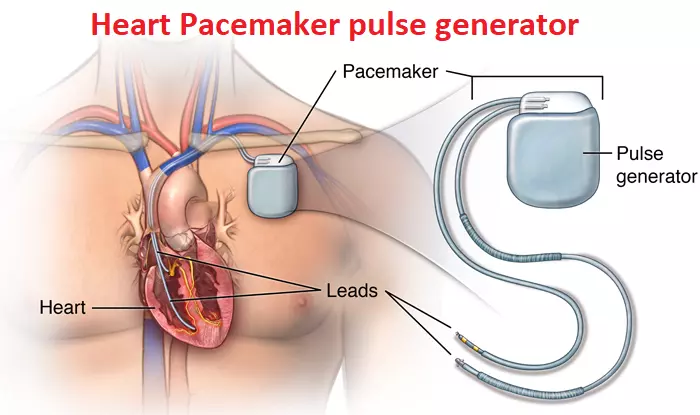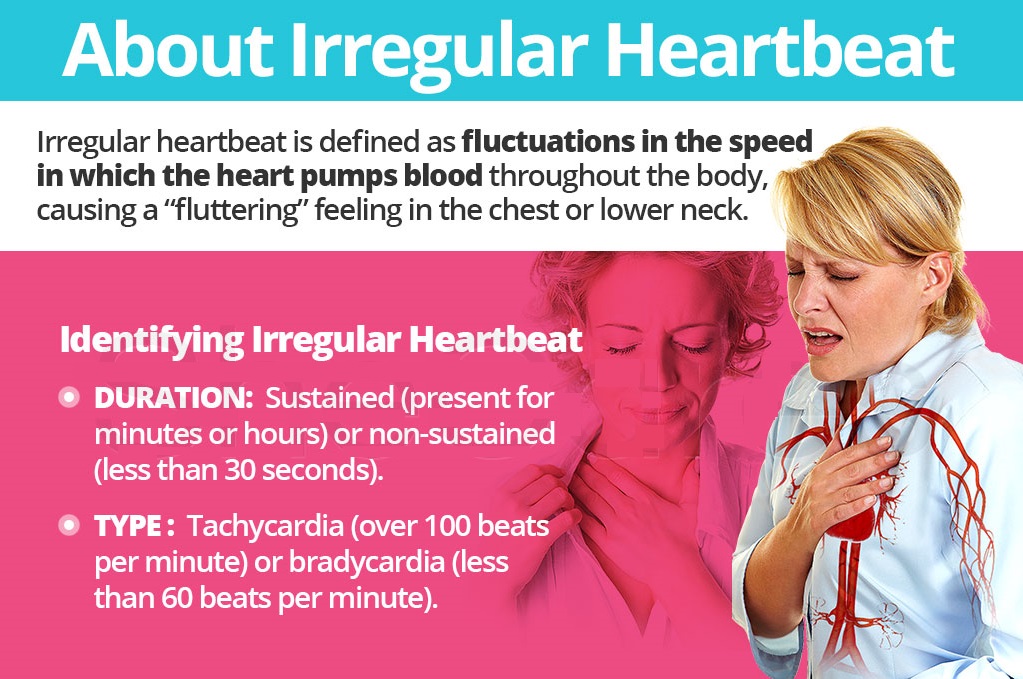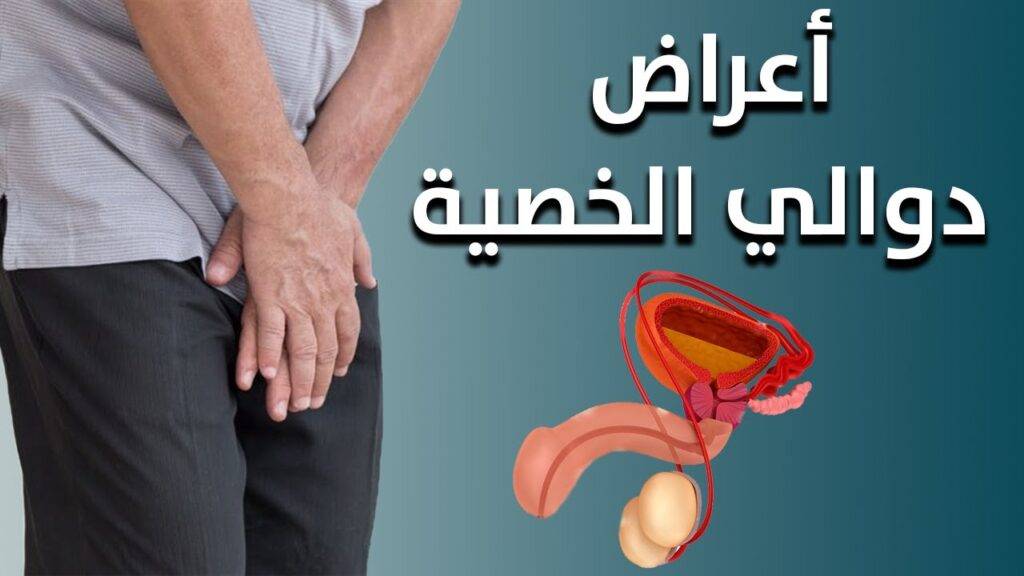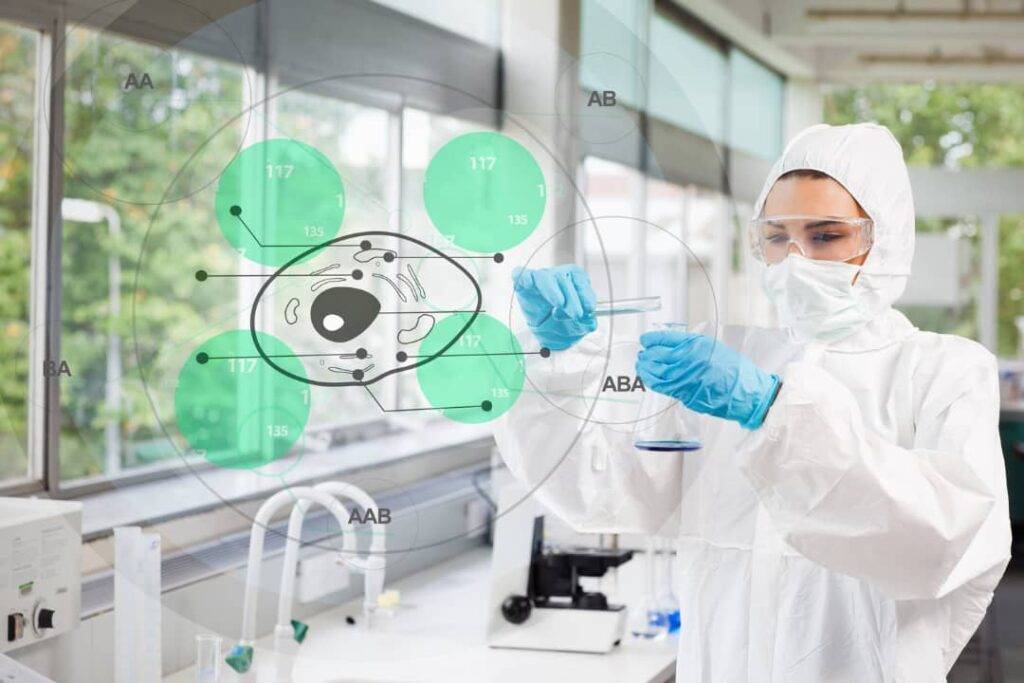In this context, we will review the heart pacemaker puls generator, shed light on its various types, and mention the methods of its cultivation and installation, in addition to reviewing its various uses in Iran, specifically in the cities of Shiraz and Tehran. We will explore how this device significantly improves the quality of life for people with heart rhythm problems, and how its applications extend to a variety of situations and conditions. Let’s explore this topic in more detail and depth.

Article contents
- Introduction.
- What is a heart pacemaker pulse?
- How does the natural pacing system of the heart work?
- Types of heart pacemakers pulse.
- When does the patient need to implant a heart pacemaker pulse?
- What is a heart pacemaker pulse based on the needs of the body?
- The size of the heart pacemaker pulse generator.
- Complications of pacemaker implantation.
- Care after heart pacemaker implantation.
- Common questions.
- Conclusion.
- Sources.
1. Introduction
Heart Pacemakers are an advanced type of medical equipment that plays a very effective role in treating some types of heart failure. These devices have different types that are chosen and implanted in the patient’s body according to the type of heart failure. Pacemakers have an intelligent function similar to the human heart. In this article, we will fully review these smart devices.
2. What is a pacemaker pulse generator?
There are two types of implantable electronic heart devices. The simple type of these devices is called a pacemaker. A more advanced type that does more than that, it’s called an internal defibrillator, or ICD.
The task of defibrillators is to increase the heart rate, the number of which is low for various reasons. Devices implanted under the skin are the most widely used type of pacemaker today. These advanced devices contain powerful electrical circuits (electrodes) that intelligently regulate your heart rate.
The pacemaker consists of two main parts:
- Beat generator
This small metal plate contains a battery and a circuit that regulates the electrical heart rate. - Electrodes
The electrodes, or wires, can vary between one and three depending on the type of pacemaker. Electrodes are implanted into the atria or ventricles. These wires are connected to the generator and transmit the electrical impulses created by the generator back to the heart.

3. How does the natural pacing system of the heart work?
The heart rate center is located in the right atrium. The pulse has a short pause in an area called the atrioventricular node. Then the electric current enters the ventricle and contracts it. Therefore, the atrial systole always occurs first, and after about twenty milliseconds, the ventricular systole occurs. There is a short period between these two contractions.
This period of time is because the atrium has enough time to transfer blood to the ventricle. When the ventricle is completely filled, it contracts. So this sequence is very important and its absence renders ventricular contraction completely ineffective; As a result, cardiac output will decrease. Decreased production, especially during activity, leads to fatigue, weakness, and lethargy.
4. Types of heart pacemakers
The doctor should consider the best pacemaker according to the patient’s needs. Pacemakers have three different types, which we have mentioned below.
- Single-chamber pacemaker (single belly).
- A two-chamber (ventricular) pacemaker.
- Triventricular pacemaker.
5. When does the patient need to implant a pacemaker?
In general, there are two types of heart disease that lead to a low heart rate. Implanting a pacemaker could solve his problems. In the following, we have provided explanations about these diseases.
- Sinus node disease.
- Heart block disease
- Sinus node disease
This disease occurs in a part called the sinus node. The sinus node is the center of impulse generation. In a normal person, this part produces the pulse and the pulse enters the AV node through the atria. Next, it enters the right and left ventricles through the branches. If there is a disturbance in the medial center, sinus node disease has occurred. In this case, the pulse is not sufficient and necessary for the body.
For example, a person needs 50, 60 or more beats in one minute at rest. The same person needs 80 or 85 beats during activity, such as climbing stairs, and 100 beats if the activity is more intense, such as walking faster. This person needs 120 beats if he is running and more beats if he is more active.
If the heart is unable to make a normal beat, then the pulse will be slower than 70. Or as another example, if a person has an activity that requires 100 beats per minute
Yes, the sinus node eventually reaches 50 to 60 beats per minute! This makes the person feel tired and lethargic after a little activity. If the insufficiency is greater, blood may not reach the brain sufficiently due to the significant drop in heart rate, and the person may experience confusion, dizziness, loss of consciousness, and fainting. In this condition, a person is not even able to maintain balance while standing. Therefore, the sinus node is one of the insufficiencies that are treated with a pacemaker.
- Heart block disease
Another disease prevents them from being sent to the ventricles even though enough pulses are being produced. This will reduce the heart rate. For example, only 30 out of 60 heartbeats reach the ventricle. Because the atrioventricular node or the branches inside the ventricle, which are responsible for directing these electrical signals and impulses, are diseased. This disease is called heart block. In this disease, implantation of a pacemaker is needed.
The type of pacemaker used in heart blocks is two-chamber. Because the center of the system is normal and does not need a pacemaker. In this type of implant, a wire is placed into the right atrium. This wire receives the naturally occurring impulses and guides the wire inside the ventricle to deliver an electrical impulse to the ventricle. Therefore, the normal function of the healthy sinus node is used to make the pulse, and based on the needs of the body, an electrical impulse will be generated for the abdomen.

6. What is meant by a pacemaker based on the needs of the body?
In general, the defibrillators in use today are defibrillators that work based on the needs of the body. For example, when the heart rate is normal, the machines don’t work.
These pacemakers actually contain a sensor that regularly checks for beats in the atria, ventricles, or both. The sensors can distinguish between a normal and a slow heartbeat. If the pulse is slow, the pacemaker starts to work and activates the heartbeat. This is why these advanced devices are called pacemakers based on the needs of the body.
7. The size of the heart pacemaker
Fortunately, all types of pacemakers are very small. These devices comprise very thin plates of one or two millimeters in diameter, and all of the advanced electrical systems are enclosed in the same very thin layer within this plate. These plates are usually a few centimeters in size and about 28 grams. The plates are implanted under the skin. If the doctor cares about aspects of beauty and is skilled enough in this, these devices are not seen at all. Even some patients themselves do not understand where the pacemaker is implanted.
8. Complications of pacemaker implantation
Pacemakers are not dangerous for the patient, and according to the explanations provided, their implantation is necessary to treat some heart diseases. But in rare cases, the following side effects may be noted:
- Infection where the device is implanted.
- An allergic reaction to the dye or anesthesia used in the procedure.
- Bruising and swelling or bleeding at the implantation site, especially if you are using blood thinners.
- Damage to blood vessels or nerves near the pacemaker.

9. Necessary care after pacemaker implantation
The possibility of these devices not working well after implantation is very low, but care must be taken and the following should be remembered:
- Cell phone (mobile phone)
It’s okay if you have a mobile phone with you, but you should place it at least 15 cm away from the pacemaker. So never put the phone in your shirt pocket. Also, when talking, move the phone to the side away from the pacemaker. - Security system
Airport metal detectors may not affect pacemaker performance, but try not to get too close to them. In these cases, it is best to carry identification showing that the pacemaker has been implanted in your body. - Medical Equipment
Certain medical procedures such as CT scans, MRI scans, radiotherapy, etc. can cause the pacemaker to malfunction. If you need these items, you must inform your doctor about the presence of this device in your body
Also, always keep devices such as high-voltage transformers, motor-generator systems and welding tools at least 16 cm away from them.
10. Common questions
- How long does a heart pacemaker last?
The lifespan of a heart pacemaker is usually 7 to 10 years, depending on how much it is used. When the device’s battery runs low, the heart pacemaker device must be replaced. - How often should you see a pacemaker?
6 weeks after implantation of the pacemaker, it should be fully checked. Adjustments will be made that will extend the life of the pacemaker. The pacemaker should then be checked by phone every 3 months to determine how well the battery is working. The nurse will explain how to check the pacemaker using the telephone transmitter. It is necessary to go to the hospital or doctor’s office once or twice a year for a more complete examination. - What do you expect after pacemaker surgery?
You will stay overnight in the hospital to have the pacemaker implanted. The nurses will monitor your heart rate and rhythm. The next morning, a chest X-ray will be taken to ensure proper placement of the leads and pacemaker.
It will show you how to care for the wound. Keep your wound clean and dry. After 5 days, you can take a shower. Check the wound every day to make sure it is healing. Before you leave the hospital, your pacemaker settings will be checked. - How long does it take to implant a heart pacemaker?
Implantation of an intracardiac pacemaker takes about one to two hours.
11. Conclusion
In this article, we have provided comprehensive information about pacemakers. Different types of these devices can compensate for heart failure and incomplete heart function. Therefore, people who have these organs in their hearts will have the same heartbeat as healthy people.
Sources:
Valchanov, Kamen; Jones, Nicola; Hogue, Charles W. (2018-07-05). Cambridge University Press. ISBN 978-1-108-66567-4.
Sharma, Parikshit S.; Vijayaraman, Pugazhendhi; Ellenbogen, Kenneth A. (2020). “Permanent His bundle pacing: shaping the future of physiological ventricular pacing”. Nature Reviews Cardiology. 17 (1): 22–36
Read more about other articles in the medical fields (Cosmetics and Medical).
- Hair Transplantation in Iran
- Rhinoplasty (Nose Job in Iran)
- Face Lift Surgery (Rhytidectomy) in Iran
- Breast Lift in Iran
- Chin Surgery in Iran
- Liposuction in Iran
- Tummy Tuck (Abdominoplasty) in Iran
- Butt Augmentation (Brazilian butt lift)
- Breast Augmentation in Iran
- Eye Care in Iran
- Cataract Surgery in Iran
- Diabetic Retinopathy Treatment in Iran
- Heart Surgery in Iran
- Knee Replacement in Iran
- Eyelid Surgery in Iran
- Safe Abortion in Iran
- Fertility Treatment in Iran


